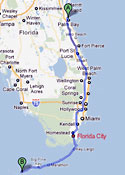Bahia Honda State Park
We headed out on another day of adventure, going further south than the day before. This was to be a reconnaissance mission for future trips, so we took notes on where we found boat ramps or just good spots off the side of the road.
All the stores and hotels have lots of brochures about the keys, and we found one with a big tear-out map that broke the keys into five sections. There were markers for parks, boat ramps, etc., but not all the ramps were good for kayaking.
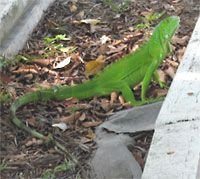 In search of one boat ramp shown on the map we stopped at the Turtle Hospital in Marathon to ask directions. In search of one boat ramp shown on the map we stopped at the Turtle Hospital in Marathon to ask directions.
An iguanna was in the parking lot. I love iguannas, and was happy to see so many of them running around loose.
This one was about three feet long and bright green.
We found the boat ramp eventually, but didn't like it, and continued on south across the Seven Mile Bridge.
Let's pause here for a short history lesson...
The Seven Mile Bridge started out as part of the Florida East Coat Railway - also known as "Flaglers Folly".
Henry Flagler built a railroad through the south of Florida. It started as the East Coast Railroad, and eventually turned into the Overseas Highway, or US1.
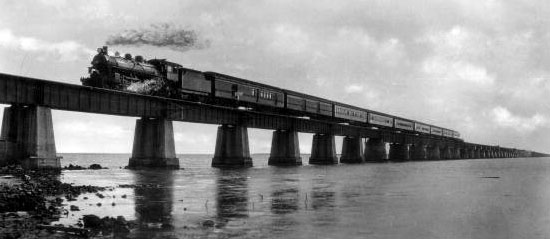
Courtesy of Florida Photographic Collection

You can compare the bridge supports in the old photo and the new and see that the new 7-mile bridge runs next to the original 2-lane roadway. 
See this photo on Google Earth:
24° 42' 8.58" N 81° 9' 18.14" W
Pigeon Key looks like the perfect tropical island home with the longest driveway in the world, but it played a historic role in the construction of the railway.
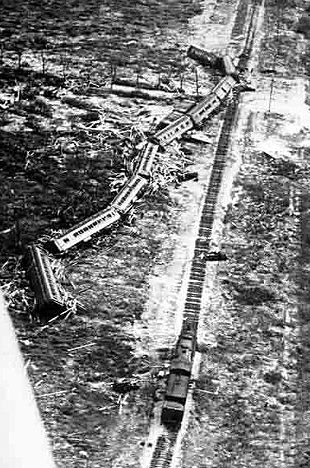 Work on the Seven Mile Bridge began in 1908. Pigeon Key is located midway across this stretch of water and was used as a base camp for consturction workers - as many as 400 at a time. Workers lived in terrible conditions and mosquitos and weather didn't help. Work on the Seven Mile Bridge began in 1908. Pigeon Key is located midway across this stretch of water and was used as a base camp for consturction workers - as many as 400 at a time. Workers lived in terrible conditions and mosquitos and weather didn't help.
The Labor Day Hurricane of 1935 was the downfall of the railway. It was the strongest storm of the season, and one of three Category 5 hurricanes to hit the U.S. - the other two being Camille in 1969 and Andrew in 1992.
A storm surge of 18 - 20 feet washed over the lower islands. Most of Islamorada was destroyed, and more than 200 World War I veterans housed in work camps were killed by the storm surge and flying debris. The hurricane killed more than 400 people, nearly all in the Florida Keys. 
The swing bridge was shown in the movie "True Lies". They blew up a model for the movie, but this section had already been removed.
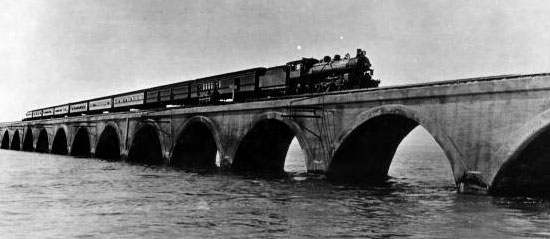
Courtesy of Florida Photographic Collection
The Overseas Railway in operation, and the old bridge today. 
See this photo on Google Earth:
24° 38' 55.35" N 81° 19' 18.78" W
...and now back to our story...
We continued on to the Bahia Honda State Park. There was a lovely beach for swimming and snorkeling, and we launched our kayaks there for a short ride.
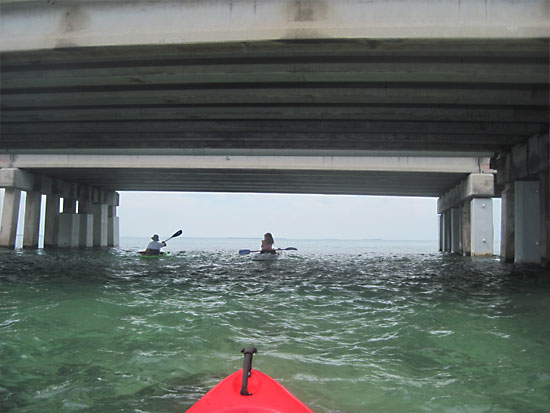
It was a pretty windy day, so only Mike, Abby and I continued around the beach and under the old railway and US1.
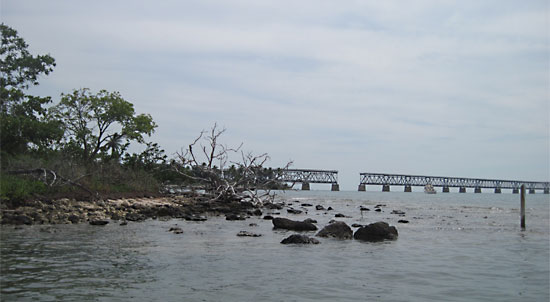
A section was removed from the old railway to allow sailboats through.
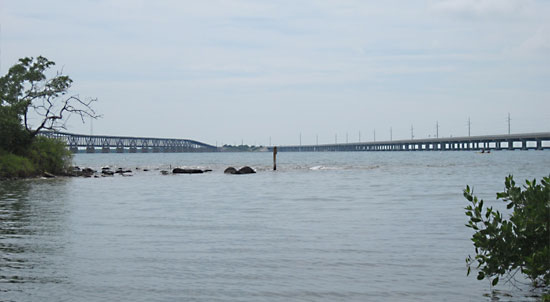
The railway and US1 looking south.
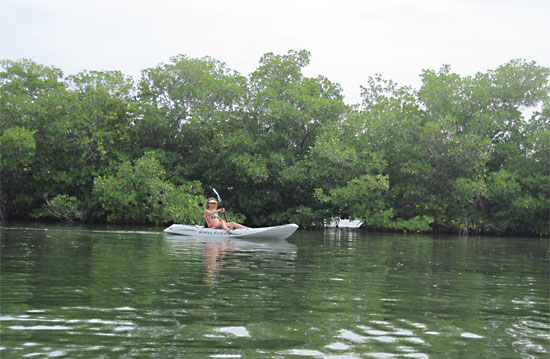
We paddled around some canals and snorkeled a little. Another kayaker said his wife and daughter had seen a sea turtle the day before, but I didn't see one.

Returning to the beach, we swam and snorkeled until late in the afternoon.
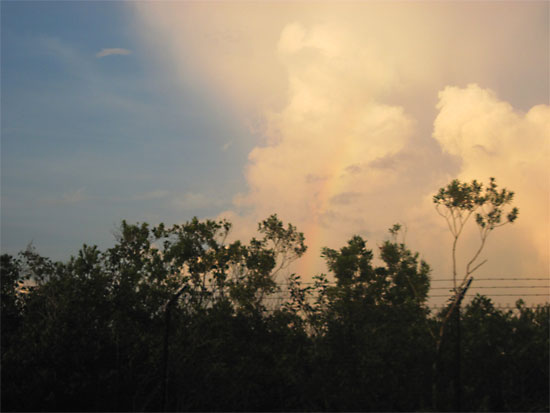
As we headed back to our hotel we ran into rain - and a rainbow.
|



